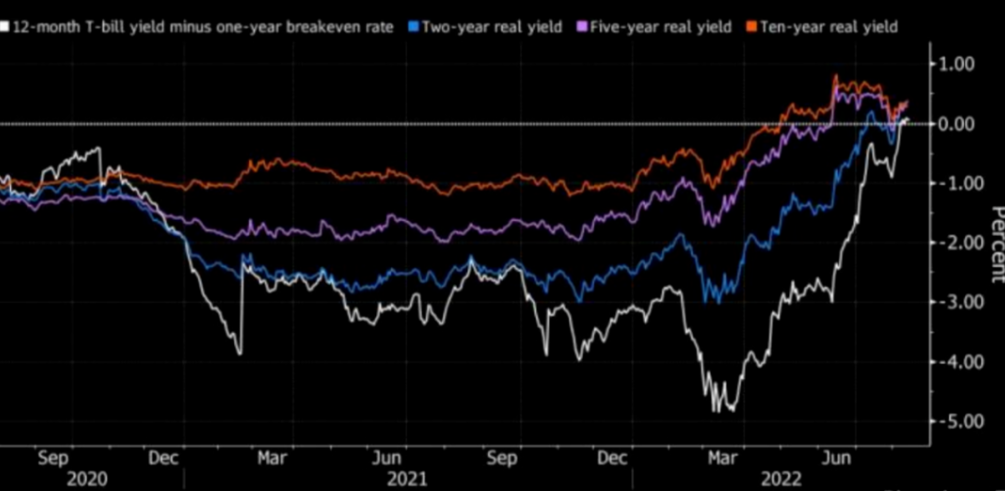Anything is possible in this summer.
The Fed has achieved initial results in fighting inflation:
-The data released on Thursday showed that the PPI of the United States declined for the first time in more than two years in July;
-The day before, the CPI data released in July also showed that inflation had cooled down.
However, the market trend is not consistent with it.
Gold prices and US Treasury bonds have fallen, and the US stock market has achieved an "inverted V" reversal. According to the original logic, when inflation falls, the Fed's interest rate hike is expected to fall simultaneously, which will benefit gold, US Treasury bonds and US stock market. However, after 23:00 last night, all three markets changed, and there was no important news at that time.
The market trend shows the complexity of the current situation:
1. Even if there is a substantial decline in inflation, it has not changed the forecast of bond traders. It has only lowered the expectation of raising interest rates at the September meeting from 75 basis points to 50 basis points, and has not changed the path of raising interest rates this year and next.
Moreover, there will still be a non-farm data and CPI report before the meeting, and the consensus on raising interest rates formed by the current market will be subverted within one minute.
2. Fed officials' speeches are still very tough, and they have been talking about raising interest rates.
Daley, chairman of the San Francisco Fed, said it was too early for the Fed to "declare victory" over inflation, and did not rule out the possibility that the Fed would raise interest rates by 75 basis points for the third time in a row at its September meeting (although she initially expressed support for the Fed to slow down the pace of raising interest rates).
The Fed's hawkish stance is important to ensure that inflation expectations are lowered or prevented from rising.
3. The US Treasury bond market is a key point to be observed in the near future. Yesterday, its inflation-adjusted yield (real yield) curve was higher than zero for the first time since the interest rate hike, which was mainly driven by investors' downward adjustment of inflation expectations (meaning investors think that interest rates will be higher than inflation in the next few months).

The Fed's focus on yields is, in effect, a veiled signal that policy rates must be higher than predictable inflation forecasts for inflation to fall when the benchmark rate reaches its target of around 3-4 percent. Many people don't know what the significance is. In this case, the return prospects of the bond market are not optimistic, and it is difficult to be optimistic about the stock market.
In another important phenomenon that investors overlooked, there was a moment on Wednesday when the 2-10-year yield curve of US debt was upside down to the most serious degree since the beginning of 1980 while celebrating the stock market carnival caused by the CPI decline. What the bond market shows is that the current cycle of interest rate hikes by the Federal Reserve will eventually plunge the United States into recession. Bond and stock markets show two scenarios completely: bond traders are too pessimistic, while stock markets are too optimistic.
4. The stock market has been rising continuously since July. With every rise in the stock market and financial market, the financial conditions began to become loose again, which further enhanced the necessity for the Federal Reserve to keep tightening. The excessive rise in the market itself may prevent the Fed from suspending interest rate hikes in the short term.
Now is not the time to make a major judgment on the market, and it will be difficult to find the direction before the Jackson Hole meeting from August 25 to 27.
$E-mini Nasdaq 100 - main 2209(NQmain)$ $E-mini Dow Jones - main 2209(YMmain)$ $E-mini S&P 500 - main 2209(ESmain)$ $Gold - main 2212(GCmain)$ $Light Crude Oil - main 2208(CLmain)$
Comments